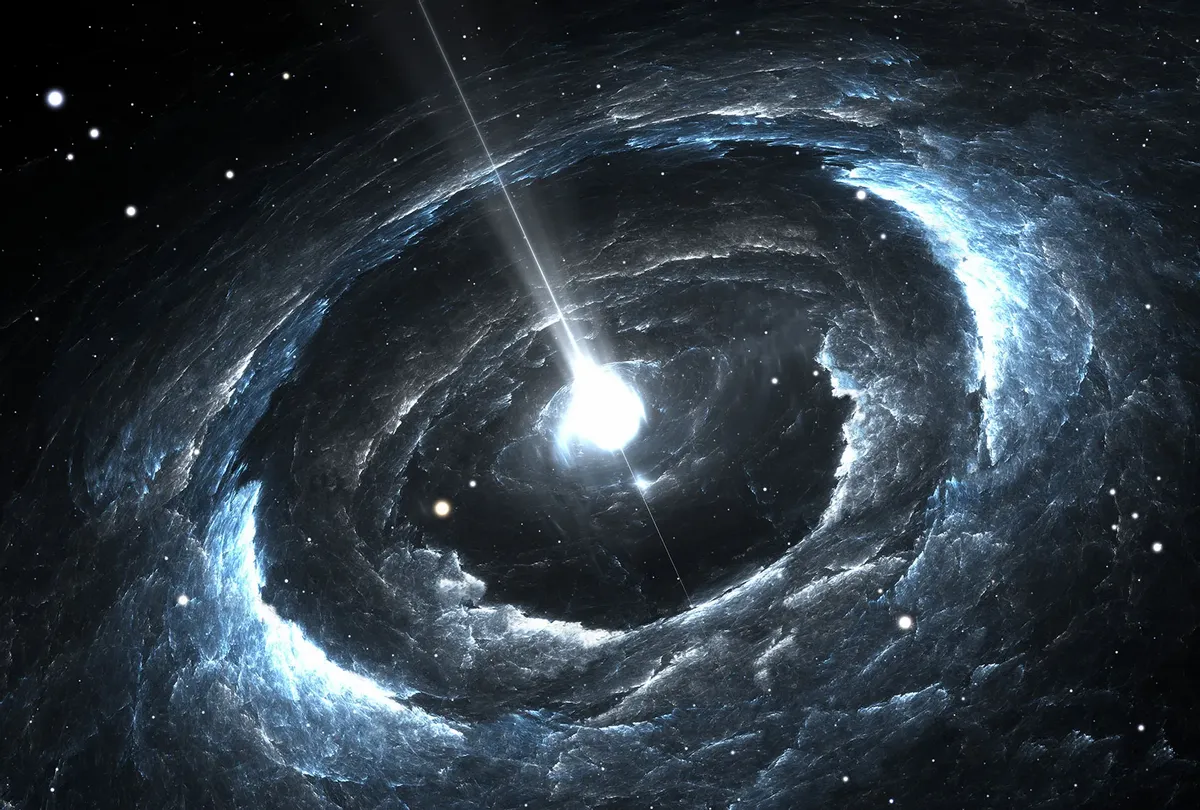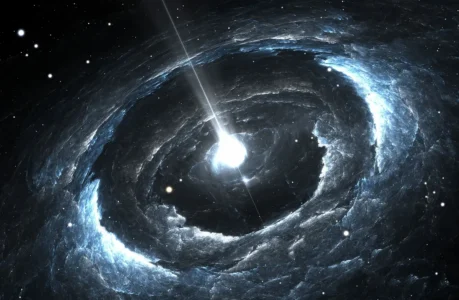Neutron stars are one of the most intriguing and exotic objects in the universe. They are the remnants of massive stars that have exhausted their nuclear fuel and collapsed under their own gravitational pull, resulting in a dense, compact object with a radius of only a few kilometres but a mass greater than that of the sun. Neutron stars are incredibly dense, with a density that can reach over a billion times that of water, and they possess unique physical properties that make them fascinating objects for astronomers and astrophysicists.
In this essay, we will delve into the intricacies of neutron stars, exploring their formation, properties, and importance in the universe. We will discuss the processes that lead to the formation of neutron stars, the physical properties of these objects, and the role they play in astrophysics.
Formation of Neutron Stars
Neutron stars are formed from the remnants of massive stars that have reached the end of their lives. Stars that are more massive than about 8 times the mass of the sun eventually exhaust their nuclear fuel and undergo a catastrophic collapse that is triggered by the gravitational force of their own mass. The collapse is so powerful that the core of the star collapses to a tiny fraction of its original size, forming a neutron star.
The process of collapse is driven by gravity, which compresses the core of the star until the pressure and density become so high that electrons and protons are forced to combine and form neutrons. This process is known as neutronization, and it leads to the formation of a dense ball of neutrons that is held together by the strong nuclear force.
The collapse of the star generates a huge amount of energy, which is released in the form of a supernova explosion. The supernova explosion can be so bright that it can outshine an entire galaxy for a brief period of time, and it can also release vast amounts of heavy elements into the interstellar medium.
Properties of Neutron Stars
Neutron stars are incredibly dense, with a density that can reach over a billion times that of water. The mass of a neutron star is typically between 1.4 and 2 times the mass of the sun, while its radius is only about 10 kilometres. This means that neutron stars are incredibly compact objects, with a surface gravity that is more than a billion times stronger than that of the earth.
The extreme density of neutron stars is a result of the strong nuclear force, which is the force that holds the nucleus of an atom together. In a neutron star, the strong nuclear force is so strong that it overcomes the electrostatic repulsion between the protons, allowing the neutrons to be packed very tightly together.
Neutron stars also have a very strong magnetic field, which can be more than a trillion times stronger than the earth’s magnetic field. The strong magnetic field is thought to be generated by the rotation of the neutron star, which creates a dynamo effect that generates a magnetic field.
Neutron stars also rotate very rapidly, with some neutron stars spinning at rates of up to several hundred times per second. The rapid rotation is a result of the conservation of angular momentum, which causes the core of the star to spin faster as it collapses.
Observations of Neutron Stars
Neutron stars are not visible to the naked eye, but they can be observed using telescopes that are sensitive to X-rays and gamma rays. This is because neutron stars emit X-rays and gamma rays as a result of their strong magnetic fields
Examples of Neutron stars
There are several known examples of neutron stars in the universe, including:
- PSR J0108-1431: This is one of the closest known neutron stars, located just 280 light-years from Earth. It has a mass of 1.34 times that of the sun and a radius of only 10 kilometres.
- Vela Pulsar: This is one of the most well-studied neutron stars and is located about 1,000 light-years away from Earth. It is a rapidly rotating neutron star that spins about 11 times per second and emits X-rays and gamma rays.
- Crab Pulsar: This is another well-known neutron star that is located in the centre of the Crab Nebula, about 6,500 light-years from Earth. It was first discovered in 1968 and is a highly magnetised neutron star that rotates about 30 times per second.
- PSR B1257+12: This is a neutron star that is located about 2,300 light-years away from Earth and is known to have several planets orbiting around it. It was the first pulsar to be discovered to have planets orbiting around it.
- SGR 1806-20: This is a highly magnetised neutron star that is located about 50,000 light-years from Earth. It is known to emit powerful bursts of X-rays and gamma rays, and in 2004 it produced the most powerful burst ever recorded from a neutron star.
Importance of Neutron Stars in Astrophysics
Neutron stars are important objects in astrophysics for several reasons. They are unique laboratories for testing the laws of physics under extreme conditions, such as high density, strong magnetic fields, and rapid rotation. The extreme conditions found in neutron stars are not reproducible on Earth, so studying these objects can provide insight into fundamental physics that cannot be obtained in any other way.
One of the most important aspects of neutron stars is their role in the production of heavy elements. When a massive star undergoes a supernova explosion and forms a neutron star, it can release vast amounts of heavy elements into the interstellar medium. These heavy elements are the building blocks of planets, and without neutron stars, the universe would not have the necessary elements to support life as we know it.
Neutron stars are also important for understanding the evolution of galaxies. When a neutron star is formed, it can be ejected from its parent galaxy at high speeds, and these ejected neutron stars are called pulsars. Pulsars can be used as probes to study the structure and evolution of the Milky Way galaxy, as well as to test theories of gravitational waves.
Finally, neutron stars are important for studying the behaviour of matter at extremely high densities. The densest known objects in the universe, neutron stars provide a unique opportunity to study the properties of matter at densities that cannot be reached in any other way. Understanding the behaviour of matter at such high densities is important for understanding the structure of atomic nuclei, as well as for the study of exotic forms of matter such as quark-gluon plasma.
Conclusion
Neutron stars are fascinating objects that have captured the attention of astronomers and astrophysicists for decades. These compact objects are the remnants of massive stars that have exhausted their nuclear fuel and collapsed under their own gravitational pull. Neutron stars possess unique physical properties, including extreme density, strong magnetic fields, and rapid rotation, that make them fascinating objects for study.
Studying neutron stars is important for understanding fundamental physics, the production of heavy elements, the evolution of galaxies, and the behaviour of matter at extremely high densities. Neutron stars are a testament to the complexity and diversity of the universe, and they will undoubtedly continue to fascinate and intrigue scientists for years to come

